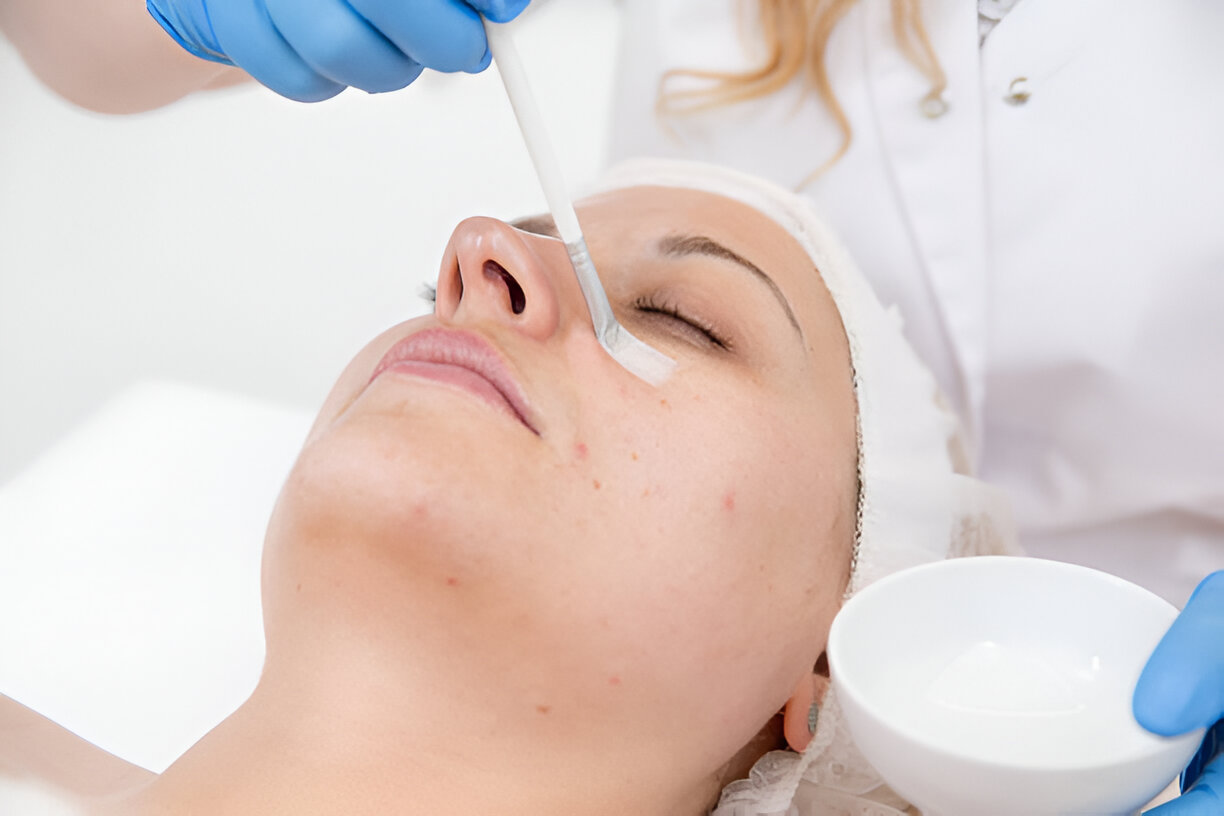A chemical peel is a cosmetic treatment designed to improve the appearance of your skin by applying a chemical solution that exfoliates the outer layers. It works by removing damaged skin cells, revealing smoother, fresher skin underneath.
A common question we receive is whether chemical peels can remove dark spots. Chemical peels can help fade dark spots by promoting cell turnover and revealing fresher skin. While hyperpigmentation often improves after a series of treatments, outcomes depend on individual skin type and condition.
If you’re ready to explore how a chemical peel can benefit your skin, Adult and Pediatric Dermatology offers customized treatments to address your unique skin concerns. Contact us today to book your consultation!
Can Chemical Peel Remove Dark Spots?
Dark spots, or hyperpigmentation, can develop over time due to various factors, including:
- Prolonged sun exposure
- Post-inflammatory reactions
- Aging
- Hormonal changes
- Genetics
Chemical peels are an effective treatment for fading these spots by encouraging skin cell turnover. This process exfoliates the outer layers of pigmented skin, gradually revealing healthier skin underneath.
As the new skin cells replace the old, dark spots become less noticeable. Depending on the severity of pigmentation, multiple sessions may be recommended for the best possible improvement.
Benefits of Using Chemical Peels to Treat Dark Spots
- Visible reduction in dark spots, leading to a more even complexion.
- Minimizes the appearance of fine lines and wrinkles.
- Gives the skin a more youthful and fresh look.
- Reduces the visibility of enlarged pores.
What Types of Chemical Peels Can You Choose?
Light Chemical Peels
If you are looking for a gentle yet effective way to refresh your skin, light chemical peels are a great choice. These peels use mild acids to exfoliate the surface layer of the skin, improving mild acne, fine lines, uneven pigmentation, and dryness.
Medium Chemical Peels
For those dealing with more stubborn dark spots or uneven skin tone, medium chemical peels provide a deeper treatment. Using stronger acids such as trichloroacetic acid, these peels penetrate the middle layers of your skin, offering more noticeable changes after just one session.
Deep Chemical Peels
Deep chemical peels may be a highly effective option for treating severe discoloration and more complex skin concerns. These chemical peels penetrate the deepest layers of skin, and effectively treat long-standing pigmentation and texture issues.
At Adult and Pediatric Dermatology, we conduct thorough consultations to understand each patient’s skin concerns and suggest chemical peel treatments as per their needs.
How Long Until Improvements Are Visible?
The visibility of results depends on the depth of the peel and the individual’s skin condition. Light peels typically offer gradual improvements over several treatments, while medium and deep peels may provide more noticeable changes after just one session, although they require longer recovery times.
Signs That Indicate You May Need a Chemical Peel
- If you have noticed dark spots or patches on your skin that have worsened over time and don’t respond to regular skincare products.
- If your skin feels rough to the touch or looks consistently dull.
- If you experience recurring acne or have lingering scars from previous breakouts.
Achieve Healthier, Brighter Skin with Adult and Pediatric Dermatology
At Adult and Pediatric Dermatology, we believe in the transformative power of chemical peels to give you smoother, brighter skin. Whether you’re dealing with dark spots, uneven texture, or mild acne, our team of board-certified dermatologists and skin care specialists will customize a chemical peel treatment just for you.
With our personalized approach, we make sure that your skin receives the care it needs for the best possible and lasting improvements. Interested in revitalizing your skin? Contact us at 718-896-3376 or visit our website!
Frequently Asked Questions
Q: What should I expect during the chemical peel procedure?
During a chemical peel, your skin is cleansed, and a chemical solution is applied to exfoliate the outer layers. You may feel a temporary tingling sensation. The procedure usually lasts 30 minutes to an hour, depending on the type of peel.
Q: How can I take care of my skin after a chemical peel?
You could use gentle cleansers, moisturizers, and broad-spectrum sunscreen daily to protect your skin. Additionally, follow your dermatologist’s specific aftercare instructions, and schedule follow-up appointments as recommended to monitor progress.
Q: Can I combine chemical peels with other treatments?
Yes, combining chemical peels with other treatments such as laser therapy or microneedling can improve outcomes. Consult with your dermatologist to create a personalized treatment plan that effectively addresses your skin concerns.
Disclaimer
This article is for educational purposes only and is not medical advice. Consult your physician for any medical concerns or before starting any treatment. Do not ignore professional medical advice due to the information read here. The authors are not responsible for any outcomes from the use of this information.

